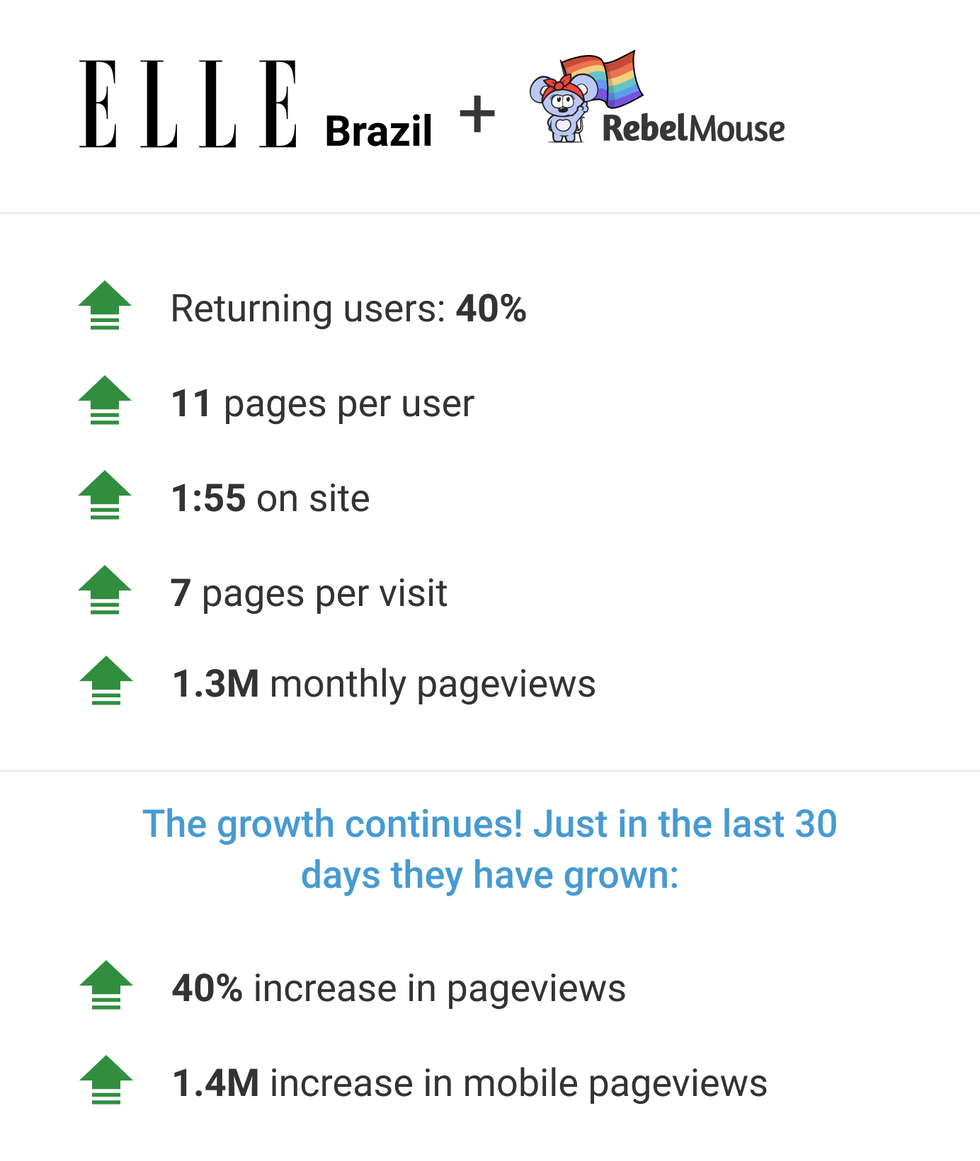ELLE Brasil launched their digital property on RebelMouse, and the results have been so fun to see. They were easily able to build real organic loyalty and engagement.
ELLE Brasil Builds Organic Loyalty on RebelMouse
By Anne BurnsAug 23, 2023
Anne Burns
Director of Marketing
Branding specialist with over ten years of experience in integrated marketing strategies, digital and social content, search engine optimization, and online advertising. I have led efforts to bring newsrooms, small businesses, and legacy brands into a digital presence that’s true to brand, profitable, and personalized.

